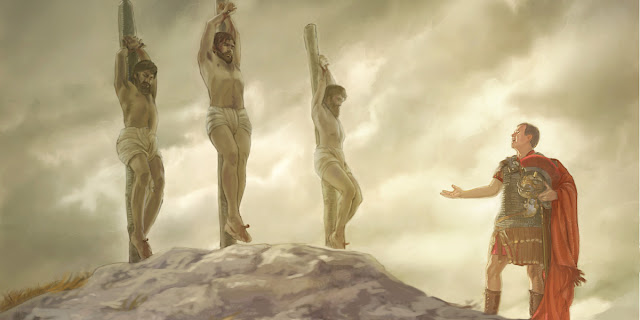Crossroads
Crossroads
Was Jesus nailed to a "cross" (with a cross-beam) or a "stake"? Does this issue matter? These questions are in light of my recent exploration of the New World Translation. Many reading this are going to ask, "Why are you even 'exploring' the NWT?" Those asking this question are taught it's a waste of time because, after all, the Jehovah's Witnesses are a dangerous cult! Depending on your flavor of KJV-Onlyism, the thought of "going back to the Greek or Hebrew" is anathema. If you're a current or former member of the IFB movement or KJV-only camp, you know exactly what I'm talking about.
The point of this study is very simple, and it answers the question why I even considered adding a NWT to my shelf for personal study. The NWT is probably a little more accurate than the KJV in some places.
"Original" word?
For example, the word translated "cross" in our Bibles is actually stauros, which literally means "stake" or "post."
σταυρόςstauros
stow-ros'
From the base of G2476; a stake or post (as set upright), that is, (specifically) a pole or cross (as an instrument of capital punishment); figuratively exposure to death, that is, self denial; by implication the atonement of Christ: - cross.
Total KJV occurrences: 28[1]
At the sight of this new word, my first question was, "Why didn't the translators just use the literal, original word 'stake' or 'post'?" Assuming the KJV is a perfect, faithful word-for-word translation of the Greek Textus Receptus (as I was taught), then why does it seem as though another word is being used? Now, you say, "Brother Nathan, a meaning of 'stauros' is 'cross,' so they weren't totally off base!" But is this really the case?
And he that taketh not his cross [stauros], and followeth after me, is not worthy of me.[2]And Pilate wrote a title, and put it on the cross [stauros]. And the writing was, JESUS OF NAZARETH THE KING OF THE JEWS. This title then read many of the Jews: for the place where Jesus was crucified was nigh to the city: and it was written in Hebrew, and Greek, and Latin.[3]
Christ hath redeemed us from the curse of the law, being made a curse for us: for it is written, Cursed is every one that hangeth on a tree [xulon]:[4]
Who his own self bare our sins in his own body on the tree [xulon], that we, being dead to sins, should live unto righteousness: by whose stripes ye were healed.[5]
Here, we see the word "cross" has been preferred over the literal rendering of "stake" or "post." Only "tree" was kept to be original (from xulon). To me, this indicates some sort of bias existed in the translation at the time that would cause the KJV translators to write "cross."
One common objection by those who insist Jesus' arms were outstretched will cite the following: "And set up over his head his accusation written, THIS IS JESUS THE KING OF THE JEWS." [6] Their reasoning is that the accusation is set "over his head." This, they say, proves beyond doubt that his arms are outstretched because otherwise it'd have to read "over his hands." This is actually complete nonsense, because if his hands are raised above his head, and the epitaph is above his hands, then it's still above his head.
Conclusion
The importance of this issue is the fact that words have meaning, and when it comes to translation, if we're going to insist the translation be as close to the "original" as possible, then scholars owe it to the reader to be as faithful as possible.
__________
[1] Strong's Concordance, E-Sword X
[2] Matthew 10:38
[3] John 19:19,20
[4] Galatians 3:13
[5] 1Peter 2:24
[6] Matthew 27:37
Further Reading
The Stauros of the New Testament: Cross or Stake?
The Greek word “Stauros” does it mean Cross or Stake? - Forum
